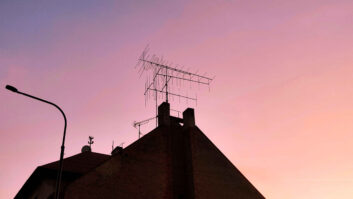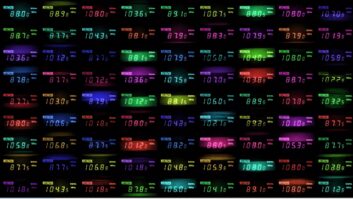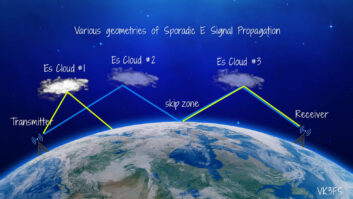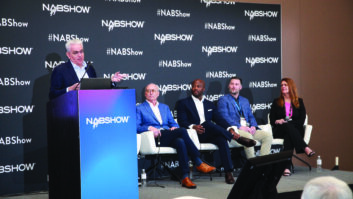One in a series of articles previewing the Broadcast Engineering Conference at the NAB Show this month.
For you IT mavens and Googlers, AES192 is a new method of cryptography: Advanced Encryption System using 192 keys to protect data in the cloud against hacking. But if you’re an FM broadcaster, AES192 is something quite different.
If you are looking for a cutting-edge, high-performance FM MPX platform to upgrade an analog composite or compressed digital system, AES192 might be the best option that technology has to offer so far.
Rob Meuser, CTO of Engineaux Inc. and a veteran globe-trotting broadcast engineer-consultant extraordinaire, pulls the curtain aside on this platform in his NAB Show paper “Digital MPX AES192 in The Real World.”
The concept was introduced about two years ago but Meuser says few stations have attempted to deploy it.
AES192 DEFINED
AES192 in its simplest form is AES-EBU digital audio sampled at 192 kHz. AES sampling is done at 44.1 or 48 kHz in most all broadcast plants. AES192 allows the FM multiplex signal including baseband audio, pilot, stereo sub, RDS and 67 kHz subcarriers to be processed and transmitted either directly at the transmitter site or from the studio through a broadband wired or wireless IP STL.
The advantages of using such an approach for FM MPX transmission are many. The primary one is that all the equipment that needs to be configured, adjusted and modified as needs require can be sited at the studio. If the STL is already a digital pipe that can pass it, only an AES192-capable exciter is needed at the transmitter/antenna site.
EQUIPMENT ON THE MARKET
Meuser will identify broadcast equipment manufacturers that are offering AES192-capable STL systems, IP codecs, audio processors and exciters and list their offerings now on the market.
“They all handle the 192 kHz formatting a bit differently but all purport to be backwards compatible to the lowest common denominator and support the Omnia/Nautel left channel only approach,” he said. Also he’ll discuss the platform and compatibility issues.
Informal industry consensus settled on the 192 kHz sampling rate that excludes the higher subcarriers above 67 kHz in the common MPX stream. Meuser says Orban offers a 384 kHz effective rate that could handle higher subs in the same stream if needed.
Deploying AES192 for FM MPX delivery seems to make the most sense when building a new plant. But it should also be considered for existing plants where the advantages of this method are deemed important and desirable. For many stations, only an AES192-capable audio processor and exciter are the needed hardware drop-in upgrades. Meuser says that’s about a $20,000 investment.
STL BANDWIDTH CONSIDERATIONS
The STL system itself must be able to pass AES192 if the processor stays at the studio. Older wireless 950 STLs with AES I/O and single T1s will not work, since bandwidth of about 5 Mb per second is required. The sampling is typically done at 584 kHz in the processor so it must be down-converted to 192 kHz for IP carriage.
Many stations have already upgraded their STLs to broadband digital pipes that can support this bandwidth via IP, either wireless in the 2.4 or 5.8 GHz ISM unlicensed or 11 GHz licensed band, or fiber. The IP links must be private point-to-point nailed down circuits but they can still potentially be challenged with bandwidth management and stability. As IP technology further evolves and improves, those issues will likely become less of a concern and more options will become available.
AES192 PLUG ’N PLAY
Meuser said, “If the processor is at the transmitter and it and the exciter both support AES192, swapping a BNC coax with an AES XLR cable is worth the effort. It does have very tight peak control and eliminates some sample rate conversions and the convertors themselves. Basically the digitally generated signal in the processor is shoved directly into the exciter’s modulator with no intervening alteration. We hit 100.04 percent modulation on infrequent peaks.”
He said the idea behind AES192 “is to eliminate everything possible from the transmitter site (except the exciter, transmitter and antenna) thus reducing the necessary skills to maintain it.” Clearly, that seems to be the goal station management is pushing onto us as fewer station engineers maintain or even deal with their RF plants, leaving that to contractors. So probably the most flexible and seamless method to deploy FM MPX with AES192 is to place the processor at the studio.
Perhaps the most anticipated part of his paper will be the unveiling of a real-world case study of one station that has deployed FM MPX AES192 successfully. Meuser says the station is at a major university but he declined to reveal the station or location until his NAB presentation due to university constraints. He’ll detail the component pieces of that AES192 audio chain setup and present measured results.







